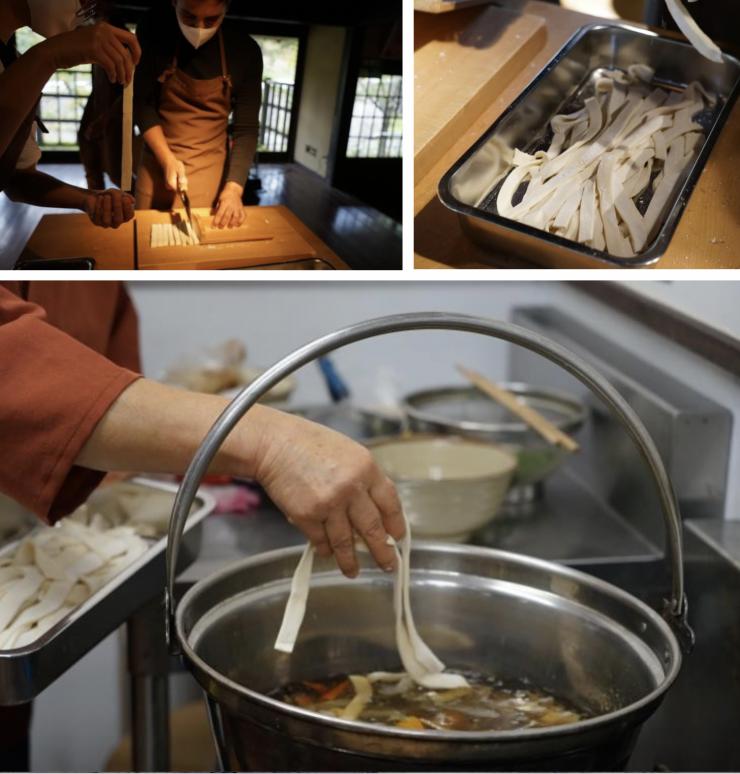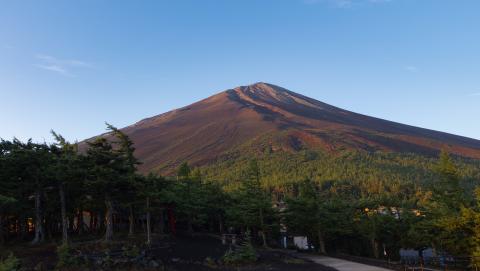Main content starts here.
Hoto noodles have a rich history, originating in Yamanashi and becoming a household favorite, traditional noodle dish. Many say Hoto noodles were a result of a rice shortage, introducing wheat noodles into the culinary culture of Yamanashi.


First, we mixed the wheat flour with some water, and kneaded it with our hands until it became dough. The texture of the dough should feel a bit gritty. Make sure it doesn’t stick to the bottom of the bowl.
We kneaded the dough by hand until it was consistent throughout. Then, we covered it to settle for about 20-30 minutes.

Next, we rolled out the dough until it reached a uniform thickness, before cutting the noodles 1.5 centimeters apart.

Once the noodles were cut, we added them to a big pot of homemade miso soup that our teacher for the day, Ms. Toshie Ashizawa, prepared for us. We then added the other ingredients: pumpkin, carrots, and daikon (Japanese radish), hakusai (Chinese cabbage), and tofu.
We served the hoto with some tempura (lightly battered, deep-fried vegetables) shiso, sweet potato, and fresh mushrooms that were picked nearby the village.


Our Hoto was a great success!
After our meal, we had the honor of touring the village of Ashigawa, guided by Ms. Kaori Noda, a local resident and city hall employee. The village’s population is mostly made up of elderly residents, and the atmosphere itself is so serene and peaceful. Compared to the busy metropolis of Tokyo, nobody seems to be in a rush and everyone is sure to greet one another.


More Info
Otengusan website:
http://www.j-gate.net/~otengusan/index.html
Email: otengusan@gmail.com
Address: Yamanashi-ken, Fuefuki-shi, Ashigawa-cho, Araihara 1955
(By car, it takes 45 min from Kofu Station, on Prefectural Road 36.)
Published on
- April 14, 2022
Share
-

Fuji Subaru Line 5th Station & Mt. Fuji Travel Guide
March 3, 2025
Home of Mt. Fuji > Staff Journal > Making “Hoto Noodles” at Otengusan

